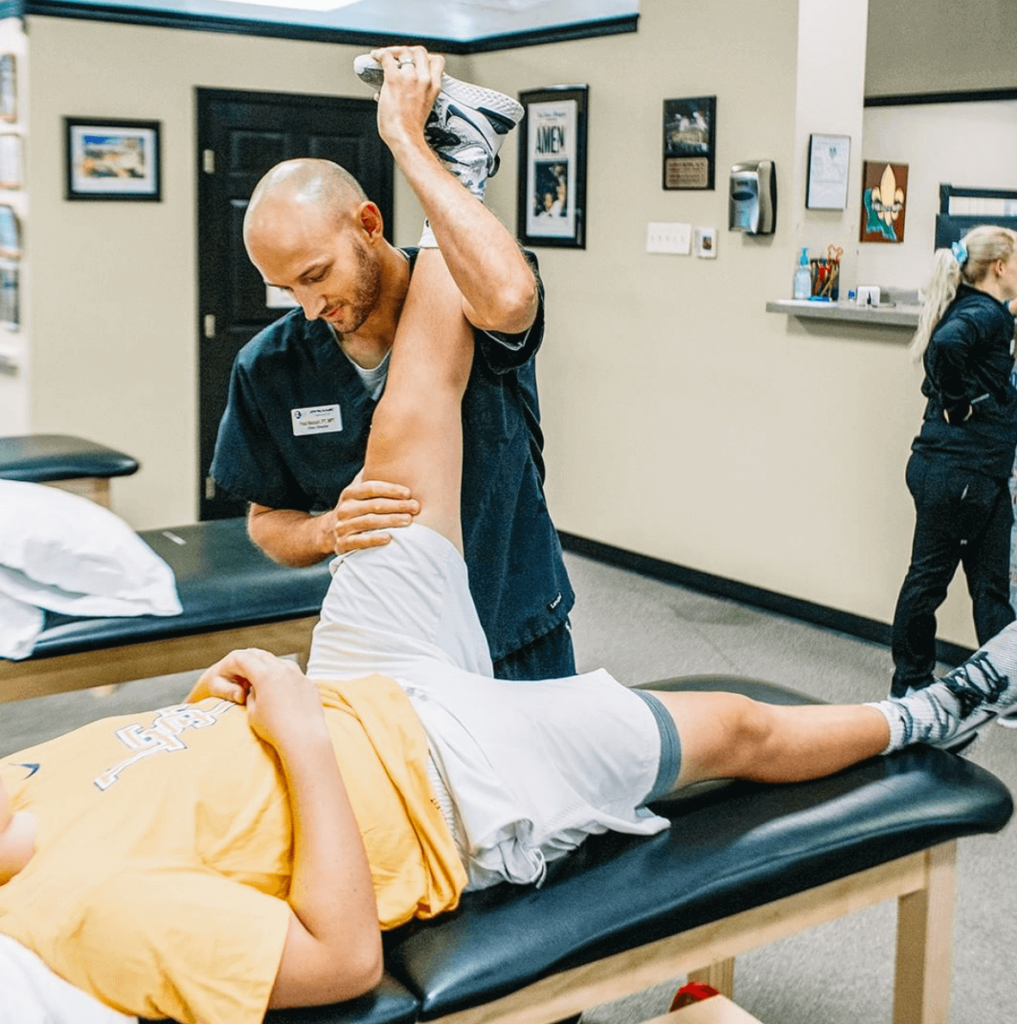Are you stretching regularly? If you don’t, you might be increasing the risk of injury in the future. By failing to stretch regularly, you’re going to have at least a few joints or places of your body that are not as flexible and mobile as they should be.
But what happens if you’re not sure where your unique mobility limits are or how to remedy them? That’s where we come in!
Contact our physical therapy clinic today if you would like to work with a movement specialist who can help you find the specific areas of your body that may benefit from daily mobility work.
Why is stretching so important?
Modern-day life involves a lot of sitting down, from our jobs to our hobbies. Over time, this can lead to tightness and shortening of muscles in areas of the body like the hip flexors, shoulders, chest, and ankles.
According to organizations like Mayo Clinic and the American Physical Therapy Association, correcting these areas of inflexibility through routine stretching can benefit you by:
- Correcting abnormal or compensatory movement patterns that may otherwise increase tissue tension and tissue damage
- Restoring and maintaining the ideal range of motion of your joints and tissues
- Improving your efficiency and quality of movement during a variety of functional tasks, which can range from improved athletic performance to better productivity at work
- Reducing your risk of injury
- Increasing blood flow and circulation in your tissues and boosting tissue health
Many people also find that maintaining a consistent stretching routine is a good way to relieve emotional stress. This is no surprise because we know that stress is associated with changes in the nervous system that can influence the structure and tension in our musculoskeletal tissues.
By alleviating tension in the body through stretching, you help trigger changes in the nervous system that ultimately alleviate mental tension, too. Talk about a brain/body connection!
Overall, our patients find that stretching can become an enjoyable part of their normal self-care routine.
At our physical therapy clinic, we consider it our job to help you become your own self-care master. That’s why we’re happy to teach you the most safe and effective stretches you can do on your own so you’ll start feeling better in your body and mind.
How can a physical therapist improve your stretching techniques?
Now that we have a better understanding of why stretching is so beneficial, the next step is to figure out what type of stretching is best for you.
Here’s where physical therapy should be a vital part of anyone’s routine. is so valuable! A physical therapist can optimize your stretching routine by:
- Teaching you how to stretch properly. When you go to a gym and watch people stretch, you’ll often see incorrect or even unsafe movements. Physical therapists use the science of body mechanics and human physiology to show you exactly when, what, how, and how long to stretch so you’ll actually start to see significant improvements.
- They can also teach you where NOT to stretch if you have specific joints or areas that are TOO mobile.
- Testing your range of motion. PT’s can test your range of motion through stretching practices. This allows us to clearly identify areas in your body that have tense or tightened tissues that could benefit from proper mobilization and flexibility exercises.
- Detecting underlying postural imbalances that may be contributing to inflexibility. Your inflexibility may be due to a problem you aren’t even aware of! For instance, you may have short hamstrings due to issues with a weak core, poor ergonomic set-up at work, or altered foot mechanics. But unless those contributing factors are properly identified and resolved, stretching your hamstrings probably won’t provide you with any lasting relief, since the underlying triggers will still be there!
- Introducing you to a variety of stretching techniques. Holding a stretch statically is just one way to work on your mobility. But there are also a lot of other neat ways to stretch and self-mobilize that you may enjoy and find use out of.
- Enhancing your self-stretching routine with manual therapy. A physical therapist has skills and tools to help you get even more out of a stretch that you could ever do on your own. This includes specialized tables, straps, and even other modalities that can tackle underlying issues and optimize tissue health and healing.
- Assessing your movement quality before and after stretching. We can help you see the “before” and “after” changes in your movement patterns to give you extra feedback and motivation for keeping up with your stretching routine.
Ready to improve your stretching techniques?
Not all stretches were created equal, and what works best for one person may not be ideal for you. For most people, stretching is considered an important part of body maintenance, injury prevention, and improved physical performance.
Contact Dynamic Physical Therapy today if you’d like to learn about the stretches that can help you feel and perform your best at work, in sport, or while out and about in your daily life.



